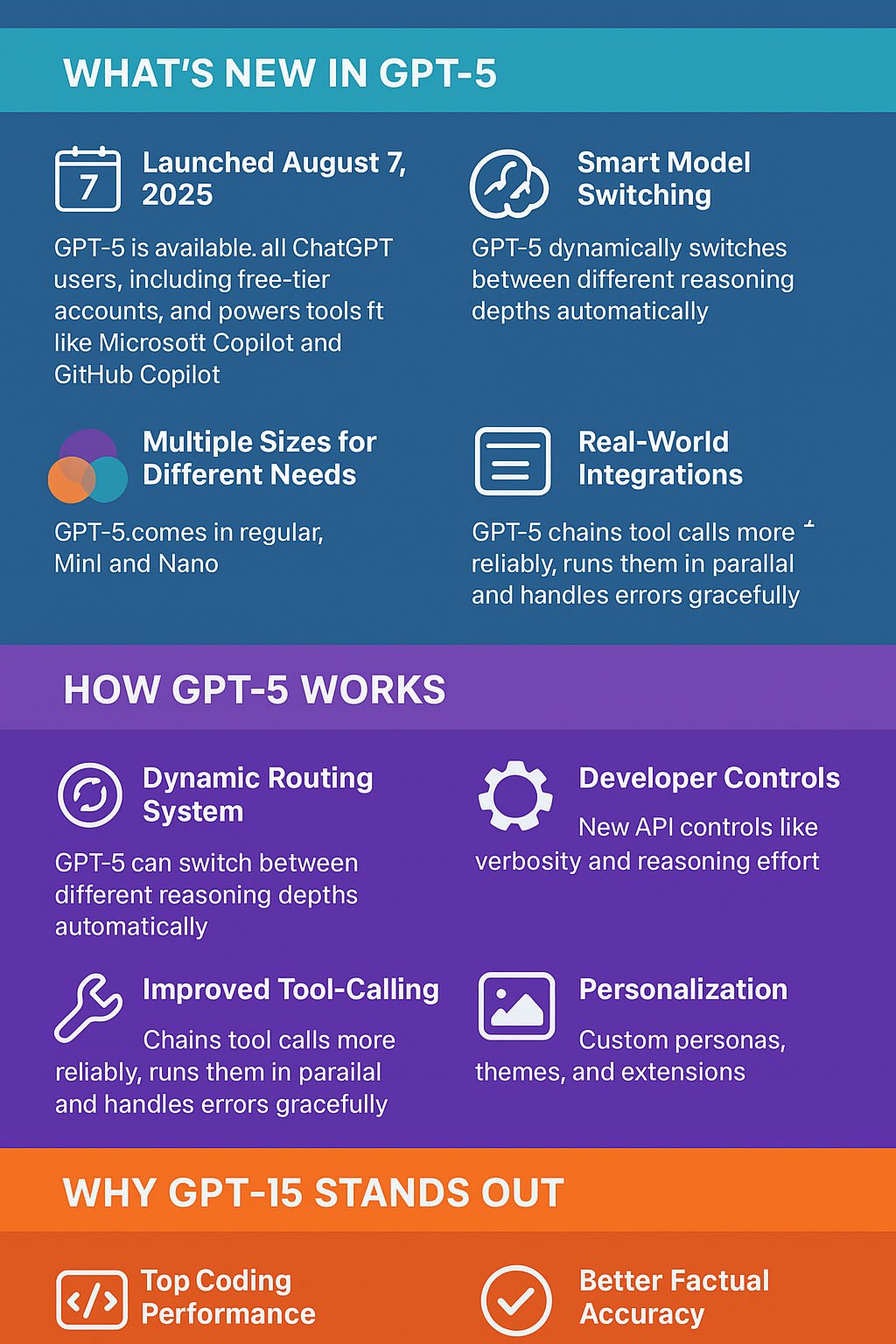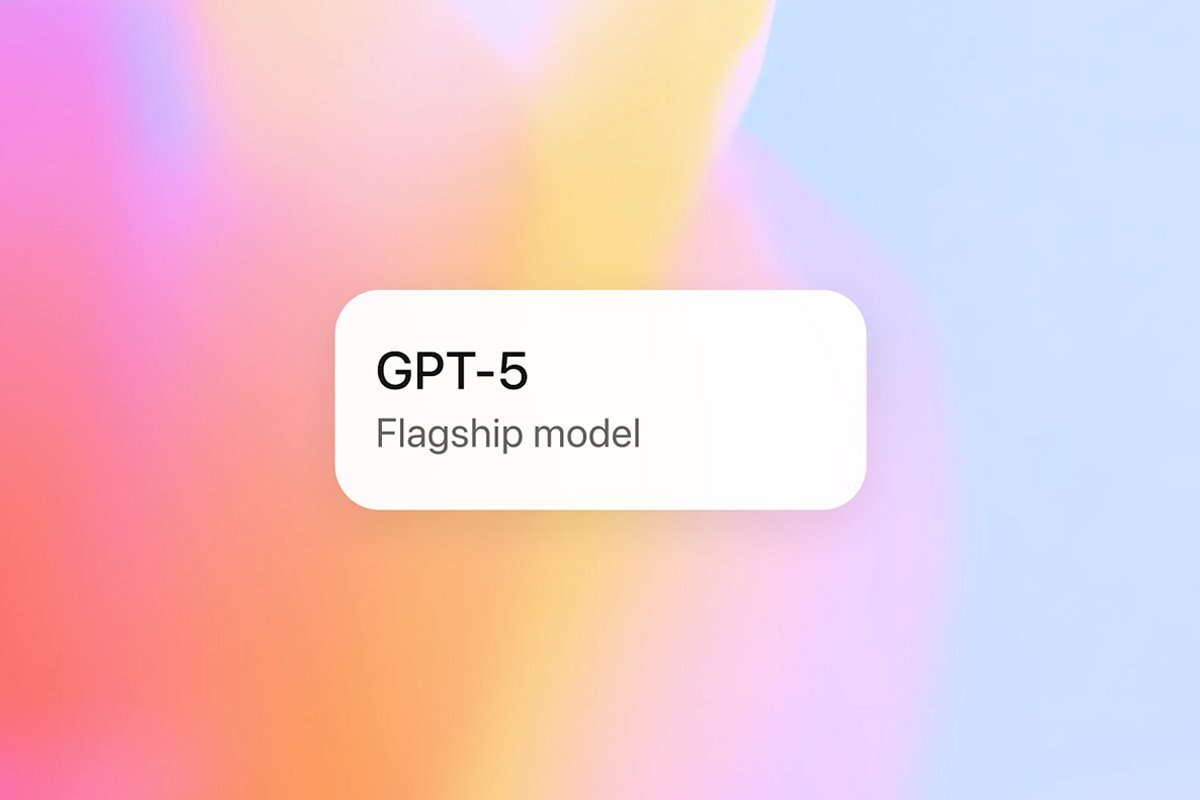If you thought AI couldn’t get much smarter after GPT-4, think again. OpenAI’s GPT-5 is here, and it’s not just a small upgrade, it’s a major leap forward in how AI understands, reasons, and works alongside us. In this post, we’ll break down GPT-5, what’s new, how it works, the advantages it brings, and the few things you should keep in mind before jumping in.
What’s New in GPT-5?
- Launched August 7, 2025
GPT-5 is now available to all ChatGPT users, including free-tier accounts, and powers tools like Microsoft Copilot and GitHub Copilot. - Smart Model Switching
Instead of you picking “fast” or “deep-thinking” models, GPT-5 decides in real time which approach works best for your query. - Multiple Sizes for Different Needs
Comes in Regular, Mini, and Nano versions, so whether you want maximum performance or speed on a budget, there’s an option. - Massive Context Window
Handles up to 272,000 tokens for input and 128,000 tokens for output, perfect for huge documents, lengthy conversations, or complex coding tasks. - Multimodal Input
You can feed it text and images together, making it useful for technical diagrams, visual analysis, or mixed-media projects. - Real-World Integrations
Works with services like Gmail and Google Calendar, making it a productivity powerhouse.
How GPT-5 Works Under the Hood
- Unified Model Architecture
A combination of fast and deep-thinking variants, managed by a dynamic router that automatically chooses the optimal path depending on context and instruction complexity. - Steerability & Developer Controls
The API introducesverbosityandreasoning_effortparameters and supports “custom tools” with flexible input formats, enabling developers to shape responses and tool interactions precisely. - Enhanced Tool-Calling & Long-Context Handling
GPT-5 chains tool calls more reliably (even in parallel), handles tool errors gracefully, and excels in retrieving and reasoning over extremely long contexts (e.g., 128K–256K tokens, with ~89% accuracy on benchmarks).
Strengths & Advantages
- Top-Tier Performance
Achieves state-of-the-art results: 74.9% on SWE-bench Verified and 88% on Aider Polyglot (coding benchmarks), scoring impressively on instruction-following and tool usage metrics. - Superior Code Generation & Front-End Design
Known for generating aesthetically rich, functional front-end applications, even from single prompts, demonstrating sound design sense and debugging capability. - Reduced Hallucinations & Improved Factuality
Factual error rates drop by approximately 80% compared to previous models, making GPT-5 more reliable for critical tasks. - Broad Accessibility & Usability
Aimed at both power users and casual users, it’s easier to use thanks to its routing system and optional controlling parameters, effectively democratising expert-level AI assistance. - Integration & Personalization
Supports rich extensions through plugins and connectors, dynamic personas, and calendar/email linking, enhancing both productivity and user engagement.
Limitations & Considerations
- Not True AGI
While GPT-5 is a leap forward, OpenAI acknowledges it still lacks autonomous, continuous learning, one major hallmark of true Artificial General Intelligence. - Mixed Early Feedback
Some developers describe inconsistent performance across variant levels like “High” vs “Medium”, noting that user experience, especially in real-world coding, can vary. - Opaque Energy Usage
The model’s power consumption is not fully transparent, with some concerns over energy efficiency for long responses. - Potential for Over-Reliance
Especially sensitive users (e.g., those on the autism spectrum) may risk over-engagement or confusion with sophisticated conversational agents like GPT-5.
Conclusion: A Powerful, Polished Leap Forward
GPT-5 represents OpenAI’s most refined and adaptable language model yet, a system that blends expert-level reasoning, developer-friendly controls, and broad usability. From code generation and design to in-depth reasoning and integration, it delivers a versatile and trusted AI companion.
Still, it’s not without limits; AGI remains elusive, efficiency concerns linger, and user experiences may vary depending on prompt clarity and model variant. But overall, GPT-5 marks a substantial step toward AI that feels both powerful and approachable.



